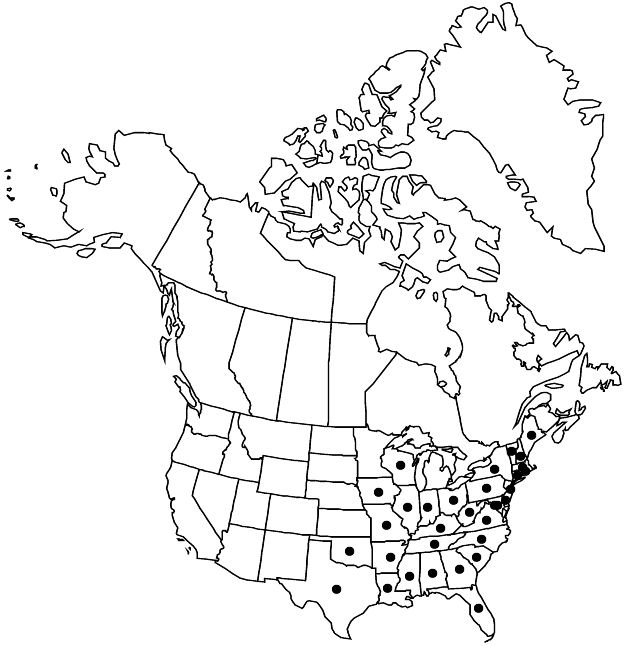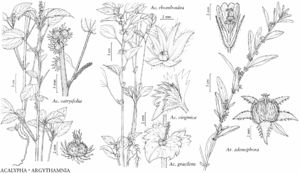Acalypha gracilens
Manual, 408. 1848.
Herbs, annual, 1–6 dm, monoecious. Stems erect, pubescent. Leaves: petiole 0.2–1.2 (–1.8) cm; blade oblong-lanceolate to linear-lanceolate, 1.7–6 × 0.4–2 cm, base cuneate, margins serrate to crenate to subentire, apex obtuse to acute. Inflorescences bisexual, axillary; peduncle 0.1–0.6 cm, pistillate portion 0.7–1.3 × 0.8–1.5 cm or pistillate bract solitary, staminate portion 0.2–2.6 cm; allomorphic pistillate flowers absent. Pistillate bracts loosely arranged to crowded (inflorescence axis clearly to scarcely visible between bracts) or solitary, 8–14 × 11–17 mm, abaxial surface sparsely pubescent, red sessile-glandular, and sometimes stipitate-glandular; lobes (7–) 9–13 (–15), deltate, 1/10–1/4 bract length. Pistillate flowers: pistil 3-carpellate; styles multifid or laciniate. Capsules smooth, pubescent. Seeds 1.1–1.9 mm, minutely pitted.
Phenology: Flowering and fruiting mostly summer–fall.
Habitat: Pine and pine-oak woods, dry hardwood forests, glades, prairies, disturbed areas, usually on sand or shallow rocky soils.
Elevation: 0–1100 m.
Distribution

Ala., Ark., Conn., Del., D.C., Fla., Ga., Ill., Ind., Iowa, Ky., La., Maine, Md., Mass., Miss., Mo., N.H., N.J., N.Y., N.C., Ohio, Okla., Pa., R.I., S.C., Tenn., Tex., Vt., Va., W.Va., Wis.
Discussion
Acalypha gracilens varies considerably throughout its range; some of the extremes have been named. The variation shows no discrete breaks and no infraspecific taxa warrant recognition (G. A. Levin 1999). Populations in central Illinois, Indiana, and Iowa have been alleged to be introduced, but they show slight morphological differences from other populations and appear to be native. Acalypha gracilens is introduced in Wisconsin. See 16. A. virginica for a discussion of the differences between A. gracilens and that species.
Selected References
None.
Lower Taxa
"elongated" is not a number."connate" is not a number. "distinct" is not a number.
